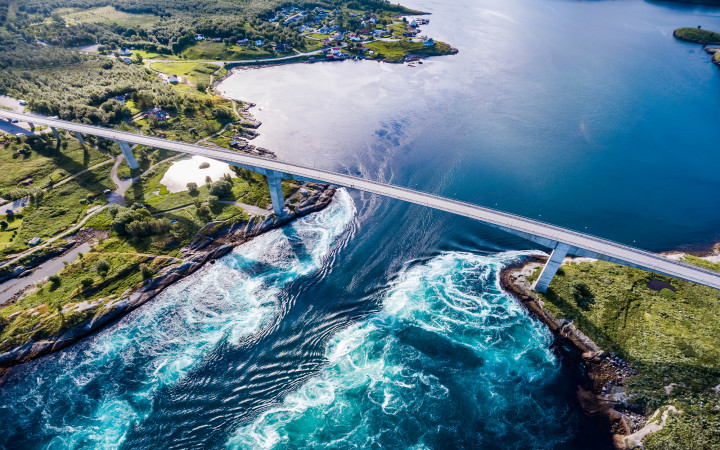Today’s Wonder of the Day was inspired by Nikhil. Nikhil Wonders, “What are whirlpools and how are they formed?” Thanks for WONDERing with us, Nikhil!
Have you ever pulled the plug from a bathtub full of water? Maybe you’ve done the same after washing dishes in the sink. If so, you probably noticed the water started to swirl around the container. It moved faster and faster above the drain. Eventually, it formed something that looked like a tornado.
Of course, it wasn’t a tornado. It was a whirlpool! These bodies of swirling water can form in nature, too. And they’re potentially dangerous for people, animals, and ships that get too close.
How do whirlpools form? It all has to do with currents. These swiftly flowing waters can be caused by many factors. Some currents are the results of heavy winds. Others are caused by a difference in water density due to temperature. They can also be driven by tides. Whatever their cause, most currents travel rapidly in one direction.
When two or more currents flowing in different directions meet, their waters begin to swirl around each other. If they’re strong enough, they may begin to spiral downward. This forms a vortex. That’s the empty space in the center of a whirlpool. It has the power to pull objects into it.
Most whirlpools aren’t cause for concern. However, those that are very large or powerful can pose a serious threat to anyone who comes too close. These very strong whirlpools are called maelstroms. They’re most likely to form when currents collide near narrow bodies of water, such as straits.
In fact, the world’s strongest maelstrom forms in the Saltstraumen Strait in northern Norway. Whirlpools up to 33 feet in diameter occur every six hours. Ships that wish to travel through the strait time their trips to pass through when the waters are safe. Otherwise, vessels could be damaged or destroyed by this maelstrom.
Other famous whirlpools include Moskstraumen, Old Sow, and Naruto. Unlike most maelstroms, those in Moskstraumen form in the open sea, away from straits and rivers. Old Sow occurs near New Brunswick. It’s named for the pig-like noise it makes. The Naruto whirlpool forms off the coast of Japan and can grow to 66 feet in diameter.
Whirlpools can also form in rivers and are very common at the bottom of waterfalls. They’ve even been known to occur in large lakes. Always stay vigilant when swimming in natural bodies of water. Whirlpools can be very dangerous and can cause drowning.
Despite the danger, whirlpools are a fascinating natural phenomenon. Many people enjoy watching strong maelstroms spin away from the safety of dry land. Would you like to visit one of these WONDERs of nature someday? Go for it—just keep a safe distance!
Standards: NGSS.ESS2.C, CCRA.L.3, CCRA.L.6, CCRA.R.1, CCRA.R.2, CCRA.R.4, CCRA.R.10, CCRA.SL.1, CCRA.W.2, CCRA.W.4, CCRA.W.9, CCRA.L.1, CCRA.L.2




